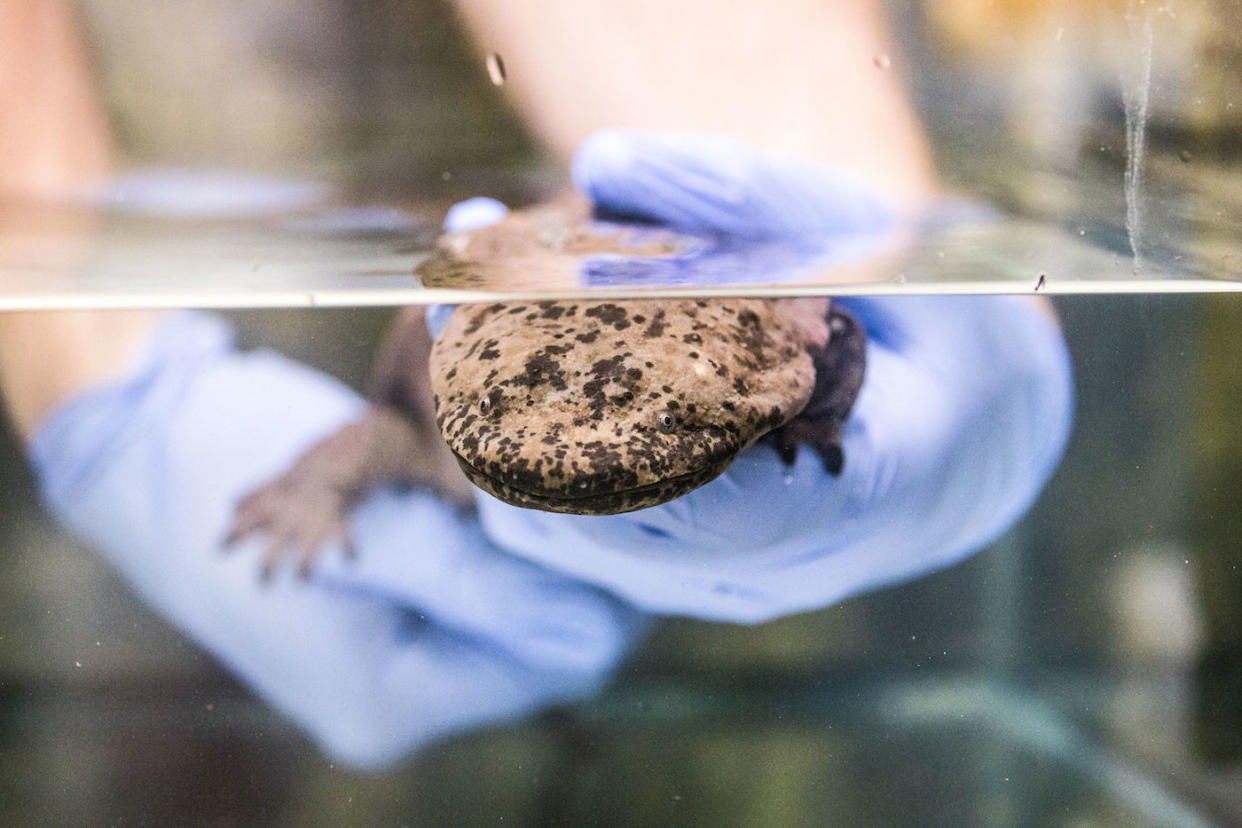Newly discovered giant salamander identified from London museum DNA is ‘world’s largest amphibian’

A newly discovered species of giant salamander is thought to be the world's largest amphibian after it was identified using DNA from a museum specimen.
The South China giant salamander is almost 2m long, scientists said.
Chinese giant salamanders, now classified as critically endangered, were previously considered a single species (Andrias davidianus).
But analysis by the Zoological Society of London (ZSL) and the Natural History Museum found three distinct genetic lineages in salamanders from different river systems and mountain ranges across China.
The three varieties - Andrias davidianus, Andrias sligoi and another new finding yet to be named - are genetically different enough to represent separate species, report authors say.

Published in the journal Ecology and Evolution on Tuesday, researchers found the South China giant salamander (Andrias sligoi) to be the largest of the 8,000 or so amphibian species alive today.
Read more
Experimental cold treatment offers ‘complete protection’ from virus
Boris Johnson mocked for dodging EU press conference amid loud protests
A third of Britons say climate change will lead to extinction of human race
The South China giant salamander was first proposed in the 1920s based on a salamander from southern China that lived at London Zoo.
Researchers used the same animal - now preserved as a specimen in the Natural History Museum after living for 20 years at the zoo - to define the characteristics of the new species.
The other unnamed new species, from Huangshan, a mountain range in eastern China, is still only known from tissue samples and has yet to be formally described.

Professor Samuel Turvey, the study's lead author, of ZSL's Institute of Zoology, said: "The decline in wild Chinese giant salamander numbers has been catastrophic, mainly due to recent over-exploitation for food.
"We hope that this new understanding of their species diversity has arrived in time to support their successful conservation, but urgent measures are required to protect any viable giant salamander populations that might remain."
Chinese giant salamanders were once widespread throughout central, southern and eastern China.
Five specimens were seized by Border Force after an attempt to illegally import them into the UK in September 2016, with one of them, named Professor Lew, rehomed at ZSL London Zoo.

